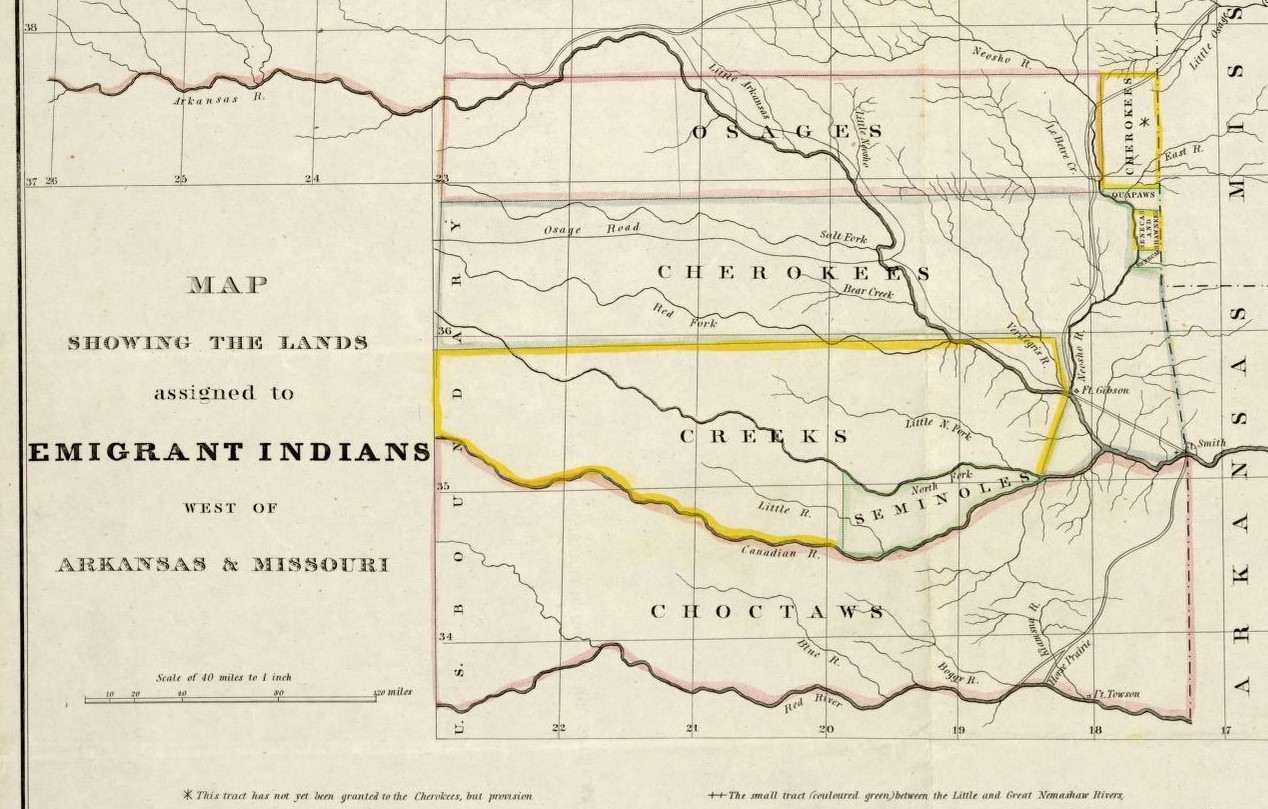
Map showing lands assigned to Native Tribes to be moved west of the Mississippi. Library of Congress.
How to register:
We offer two field trip scheduling options:
- Select a field trip from the Museum’s public event schedule
- Request to schedule a field trip at a time that meets your group’s schedule
Audience: All audiences. Content appropriate for Grades 9-12.
Goal: Recognize the impact of American domestic and foreign policy on U.S. Soldiers and civilians.
Program Description:
Duty is defined as a moral or legal obligation. Soldiers have a duty to carry out the Army’s mission. Throughout the nation’s history, Soldiers have adhered to the concept of duty to protect, defend, and carry out policy on behalf of federal government. Like Soldiers, the Cherokee have their own duty to uphold their heritage tied to their ancestral homeland. In response to the threat of removal, the Cherokee used a series of legal maneuvers to preserve their homeland. When those attempts failed, the Cherokee signed the Treaty of New Echota.
The Treaty of New Echota exchanged the Cherokee Nation’s ancestral homelands east of the Mississippi River for unfamiliar land located in present-day Oklahoma. In May 1838, the U.S. Army deployed to enforce the terms of the treaty. General Winfield Scott, along with fellow U.S. Army Soldiers, were dispatched to Alabama, Georgia, North Carolina, and Tennessee. Their mission was to relocate the Cherokee to embarkation centers and oversee the journey to Oklahoma. The forced removal of the Cherokee was one of many conducted by the U.S. Army and was a consequence of the Indian Removal Act. These removals in the southeastern U.S. became known as the Trail of Tears.
Examine how Soldiers fulfilled their obligation to carry out the terms of the Treaty of New Echota. We will also identify how the implementation of the Indian Removal Act impacted both Soldiers and Native tribes. Finally, you will better understand how the effects of this policy can still be felt today.
Objective: At the end of this lesson students, will be able to
- Understand how Soldiers fulfilled their obligation to carry out the terms of the Treaty of New Echota.
- Identify how the implementation of the Indian Removal Act impacted both Soldiers and Native tribes.
- Recognize how the effects of the Indian policy can still be felt today.
Guiding Questions:
How do Soldiers and civilians carry out their obligations?
Curriculum Connections
Common Core Standards
- CCSS.ELA-LITERACY.RH.6-8.2
Determine the central ideas or information of a primary or secondary source; provide an accurate summary of the source distinct from prior knowledge or opinions.
History and Social Science Standards of Learning for Virginia Public Schools
- United States History to 1865
- USI.8 The student will apply history and social science skills to explain westward expansion and reform in America from 1801 to 1861
- D) analyzing the impact of westward expansion on Indigenous peoples, including, but not limited to the Indian Removal policies, the Trail of Tears, and the Seminole Wars;
- USI.8 The student will apply history and social science skills to explain westward expansion and reform in America from 1801 to 1861
- Virginia and United States History
- VUS.7 The student will apply history and social science skills to analyze major events in Virginia and United States history during the first half of the 19th century by
- C) explaining the role of broken treaties and the factors that led to the military defeat of Indigenous peoples, including, but not limited to the resistance of Indigenous nations to encroachments and assimilation and the Trail of Tears;
- D) explaining the influence and achievements of significant leaders of the time, including, but not limited to John Marshall, Andrew Jackson, Chief Tecumseh, Chief Logan, Chief John Ross, and Sequoyah;
- e) describing the political results of territorial expansion and its impact on Indigenous peoples;
- VUS.7 The student will apply history and social science skills to analyze major events in Virginia and United States history during the first half of the 19th century by
Your message has been submitted.
